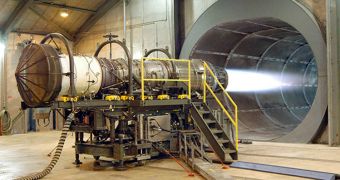An expert at the Stanford University says that using magnetic resonance imaging (MRI) has the potential to increase the efficiency of jet engines, largely by reducing the times that are needed to collect valuable measurements on the jet flow using conventional methods.
Stanford PhD student in mechanical engineering Lt. Colonel Michael Benson says that MRI scans can collect the same amount of data that usual techniques gather in one or two years in a matter of hours.
The main implication for this is that researchers working on improving this type of engines will know a lot faster if they barking at the wrong tree, so to speak. They will be able to get out of a dead-end path faster, and reorient their work in a more productive direction.
Benson is one of the first researchers ever to look into using MRI for this purpose. He is treading in the footsteps of Stanford researchers Christopher Elkins and John Eaton, who pioneered the use of this medical imaging method for other purposes that peering into the human body.
The PhD student presented his ideas on Sunday, November 21, at the meeting of the American Physical Society's (APS) Division of Fluid Dynamics, which was held in Long Beach, California.
He told participants that his main research interest is now analyzing the way in which hot combustion and cooling gases mix inside jet turbines. These engines work best at high temperatures, but this raises some technical issues.
For starters, the engine blades that are located just after the combustion chamber get really, really hot, nearing their melting point. At the same time, the edges of the blades need to be very thin in order to increase overall efficiency.
But this raises another problem. “If you don’t actively cool them, they melt,” Benson explains. Until now, the solution has been to divert air collected through intakes from the exterior through channels in the blades, so as to cool them.
“At some point, the blades become too thin to do that, so they peel off some skin at the end of the blade and let the air run over the trailing edge,” the expert explains, quoted by Science Blog.
The issue that he is studying is what happens when the cooler air from the blades meets up with the hot exhaust of the combustion chamber. Tweaking this hot and bypass air mix holds the key to boosting engine efficiency.
Thus far, the research has yielded some promising results. “I’m already able to increase the surface cooling by 10 percent, which is equivalent to a blade temperature reduction of 100 to 150 degrees [Fahrenheit],” Benson says.

 14 DAY TRIAL //
14 DAY TRIAL //